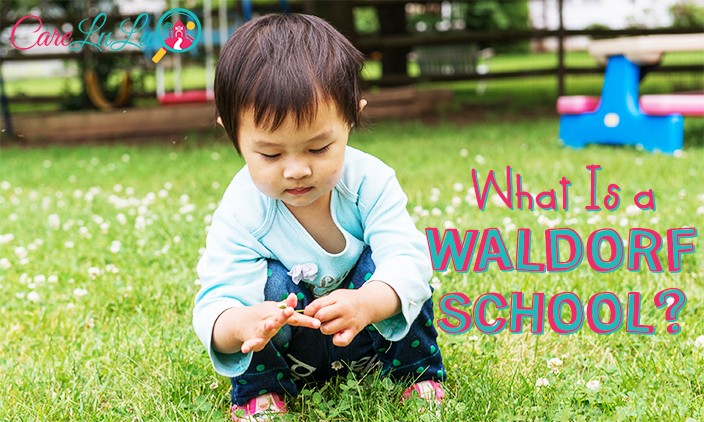What Is a Waldorf School?
Hi Deborah! The cost of a Waldorf school can vary dramatically depending on many factors such as location, hours (full-time…
Early Childhood Education, Preschool, Teaching Philosophies
Tagged with Daycare, Preschool, preschool philosophies, waldorf, waldorf approach, waldorf schoolWe’ve already been to Italy (for the Reggio Emilia approach and Montessori philosophy) so the next stop on our tour of preschool philosophies is Stuttgart, Germany!
This is where the Waldorf-Astoria Cigarette Company organized the first school based on Rudolf Steiner’s pedagogy in 1919. The educational approach is most commonly referred the “Waldorf” philosophy, although “Steiner” is also used.
So what is a Waldorf school?
Underlying the Waldorf approach is a holistic philosophy that children should develop their souls and spirits as well as their minds. Even though they are not explicitly included in the curriculum, Waldorf’s philosophical (and some would say religious) roots have raised concerns from time to time, as in this New York Times article.
Our take?
There is no one-size-fits-all to daycare and preschool.
Learn as much as you can about each child care program, and decide for yourself (and for your child) what is best. Oh, by the way, if you’re looking for a summary on different preschool approaches, this is the perfect article for you: Preschool Teaching Philosophies in a Nutshell.
As for the Waldorf philosophy itself, children are encouraged to be creative, connect with nature, and think for themselves. The overall Waldorf curriculum is broken into three stages of seven years each: under age 7, ages 7 to 14, and age 14 and up. Groups of similarly aged children generally stick together as they progress.
Just like the Montessori approach and Reggio Emilia philosophy, assessment for older students relies more on observation and project work than on traditional letter grades.
Observing an under-7 Waldorf class for the first time? Here are four things you’ll notice immediately in a Waldorf preschool:
- The “old school” learning environment. No electronic devices are allowed, toys are wooden, and the general furnishings will feel domestic and warm. The design encourages children to focus on “output,” i.e. exploring and using their imagination, as opposed to “input” from brightly colored objects or gadgets.
- Lots of creative time but in an ordered format. Children have designated days with time blocked off for different creative activities. Just like Montessori daycares and preschools, the organizational focus of a Waldorf daycare or preschool is on time as opposed to environment.
- No reading until at least age 6. Whereas other preschool philosophies suggest that starting with the alphabet earlier gives children a head start, the Waldorf approach takes it slow. The idea is to let children take care of verbal communication first before moving on to written communication.
- Outdoor activities, rain or shine. Encouraging children to know their place in the world, both indoor and outdoor, is an important part of the Waldorf philosophy. Rain is a natural feature of the outdoors and a Waldorf school will take it into account.
As you can imagine from these four points, Waldorf schools tend to attract parents who like the idea of allowing their children to make progress at their own pace, in an environment that encourages balance and finding the time for a variety of activities.
Has your child attended a Waldorf preschool? What else would you add about the Waldorf philosophy for parents wondering if this is the right preschool philosophy for their child?
